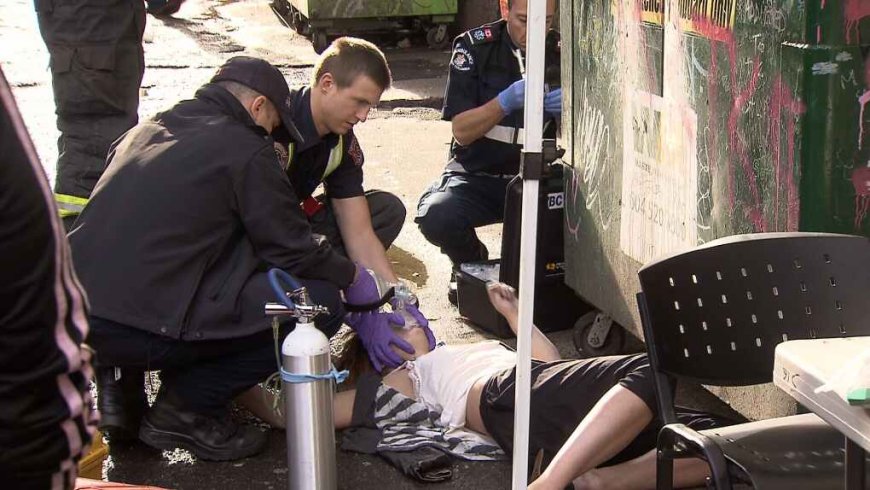U.S. Drug Overdose Deaths Reach Record High

In 2022, drug overdose deaths in the United States reached a new record, driven largely by the ongoing fentanyl crisis. Preliminary data from the Centers for Disease Control and Prevention (CDC) indicate that 109,680 individuals lost their lives due to drug overdoses last year. This alarming figure underscores the escalating public health crisis posed by fentanyl, a powerful synthetic opioid.
Eight states experienced more than a 9% increase in drug-related deaths, with Washington and Wisconsin reporting the highest surges at 21%. Conversely, some states saw a reduction in fatalities. Maryland and West Virginia, both heavily affected by the fentanyl epidemic, reported a 7% decrease in drug-related deaths from 2021 to 2022.
Despite these localized improvements, the overall trend remains concerning. "While recent statistics show a slight overall decrease in overdoses, the situation remains critical," stated Dr. Rahul Gupta, Director of the Office of National Drug Control Policy. He highlighted the role of naloxone, an overdose-reversing drug, in saving approximately 19,000 lives of those severely addicted to fentanyl. However, Dr. Gupta acknowledged significant gaps in addiction treatment, noting that only one in ten individuals with drug addiction in the U.S. currently receives rehabilitation. This disparity underscores the need for expanded access to treatment and support services. The states of Texas and Washington saw nearly 500 additional drug-related deaths each in 2022, marking significant increases. The ongoing fentanyl crisis continues to strain public health resources and devastate communities nationwide.
A comprehensive study published in *The Lancet* in 2022 projected that the high rate of drug-related deaths in the U.S. would persist, potentially resulting in an additional 1.2 million deaths by 2029. This study highlights the urgent need for robust, real-time data collection on overdoses and fatalities to inform effective public health responses. Despite decades of effort, the U.S. still lacks a comprehensive real-time tracking system for drug overdoses and related deaths. This shortfall hampers the ability to mount an effective public health response to the drug crisis. Public health experts emphasize the critical need for improved data infrastructure and expanded access to treatment to combat the ongoing epidemic.
In response to the crisis, government officials are advocating for enhanced distribution of naloxone and increased funding for addiction treatment programs. These measures aim to reduce overdose deaths and provide much-needed support to individuals struggling with addiction. As the nation grapples with this complex public health challenge, concerted efforts and comprehensive strategies will be essential to stem the tide of overdose fatalities and save lives. Drug abuse is a critical public health challenge in the United States, with significant social, economic, and health impacts. Despite efforts to address the issue, a worst-case scenario analysis considers the potential for exacerbation of current trends, compounded by systemic and societal factors. The U.S. has faced severe opioid addiction issues, including prescription painkillers, heroin, and synthetic opioids like fentanyl. In 2020, over 93,000 drug overdose deaths were recorded, with synthetic opioids involved in more than 60%. Over 2 million Americans are affected by opioid addiction, with a notable rise in deaths among young adults aged 18-25.
In a worst-case scenario, the production and distribution of synthetic opioids could become more widespread, leading to higher overdose death rates. An increase in drug abuse cases could overburden the healthcare system, resulting in inadequate care and higher mortality rates. The economic burden, already over $740 billion annually, could escalate, reducing funding for prevention and treatment programs and creating a vicious cycle of increased abuse and reduced intervention capabilities. Socio-economic disparities could widen, with marginalized communities experiencing limited access to education, employment, and healthcare, exacerbating addiction cycles. Higher crime rates, including drug trafficking, theft, and violence, could stretch law enforcement thin, increasing incarceration rates and societal instability. A mental health crisis could arise, with inadequate resources to support those suffering from co-occurring disorders, potentially leading to higher suicide rates and chronic psychological issues.
Youth could be significantly impacted, with higher addiction rates affecting their health, education, and future workforce stability. However, several strategies could mitigate these outcomes. Strengthening regulations, increasing healthcare funding, implementing public education campaigns, expanding community support programs, investing in research, and implementing policy reforms focusing on rehabilitation rather than incarceration are essential measures. A worst-case scenario for drug abuse in the U.S. outlines a future with widespread synthetic opioids, an overwhelmed healthcare system, widened economic and social disparities, higher crime rates, and a deepening mental health crisis. Addressing these challenges requires a multifaceted approach involving regulatory measures, healthcare investment, public education, community support, research, and policy reforms. Proactive measures today can help mitigate this scenario, safeguarding public health and societal stability for future generations.













































